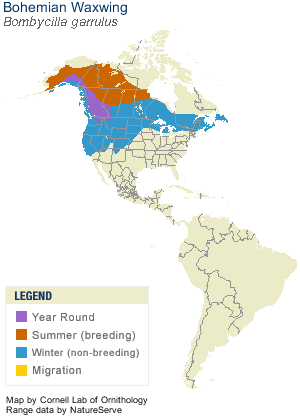The flurry of spring migration season is nearly over, but that doesn’t mean you won’t be seeing some interesting songbirds. According to Kaufman Guides, one of the lingering species you’ll likely see is the Cedar Waxwing.
The Cedar Waxwing is one of the last birds you’ll see laying eggs since most of them begin nesting at the end of June (something you could see in our nesting chart).
But for those who live in the area where Cedar Waxwings and Bohemian Waxwings overlap, it can be fairly difficult to tell them apart. So here are some helpful tips to help you.
Location and time
The first thing you should consider is location and time. Bohemian Waxwings spend summer and spring in the northern portions of Canada and Alaska or in high altitudes in northwestern United States, you’re likely seeing a Cedar Waxwing. It’s only in the winter that Bohemian Waxwings come down into western and northern portions of the United States. But if you live in a place that overlaps during certain parts of the year, this probably won’t help too much. Here’s a helpful map of each species range taken from Cornell’s All About Birds.
Size
Without a comparison of each species next to each other, it’s usually hard to get a grasp on the size of a bird. However, generally speaking, Bohemian Waxwings are bigger and stockier than Cedar Waxwings. Here’s a great observation from
Color
The color will reveal which species it is. The chest and belly is a good indicator of the species. A Bohemian Waxwing has a gray chest and belly while a Cedar Waxwing has a brown chest with a yellow belly. If you can, check out the undertail of the bird when in flight. If the undertail is a brownish orange, it’s a Bohemian Waxwing. If the undertail is white, it’s a Cedar Waxwing.


Markings
Finally, another field mark you can look at are the wing feathers. Bohemian Waxwings will have white bars going across the feathers horizontally. Cedar Waxwings, on the other hand, will have light white lines going down vertically halfway down the bird’s back.







6 Comments
Every year I have cedar waxwings come to eat all the mulberries which they love. But I did not know about the Bohemian Waxwing I am in Canada 🇨🇦 so now I know what they look like I can watch out for them & know how to identify there differences. Thank you awesome site. 😎
Wonderfully informative. Thank you so much for the range maps and photos with clear distinctions pinpointed.